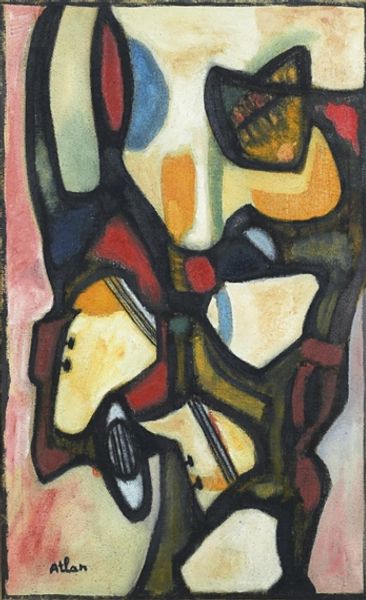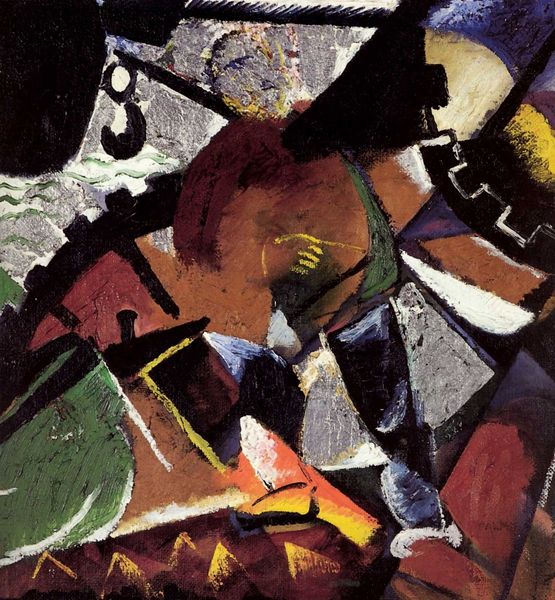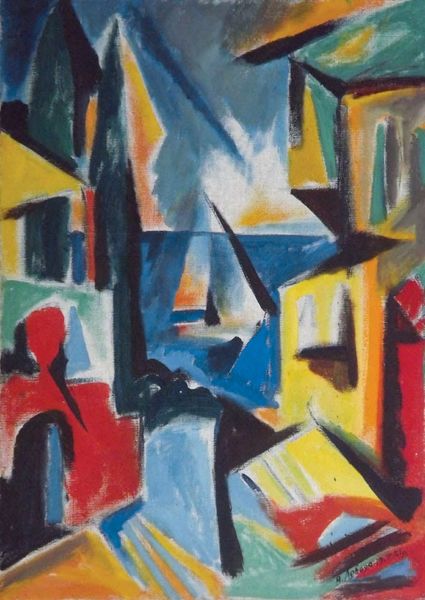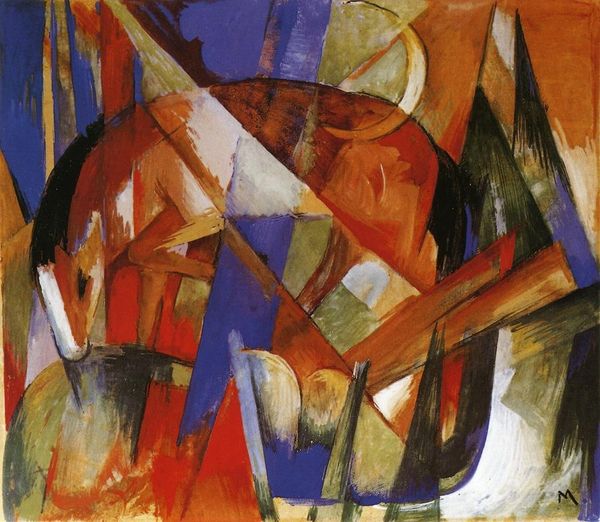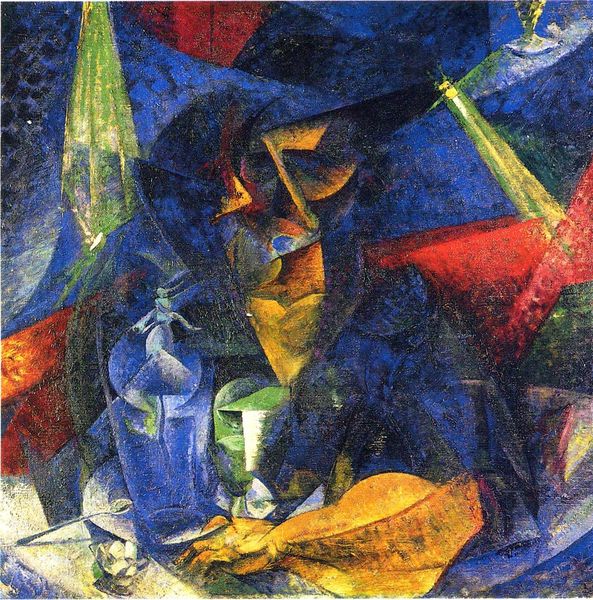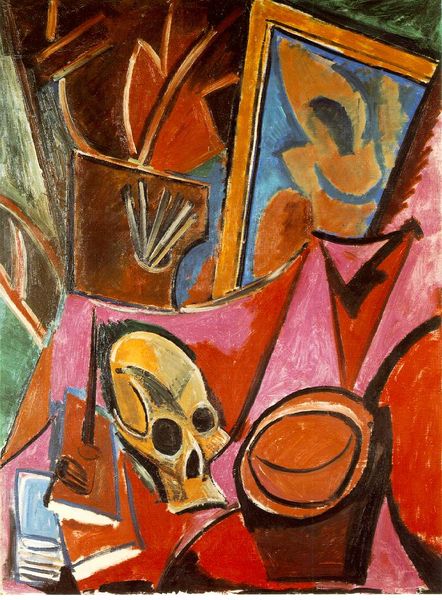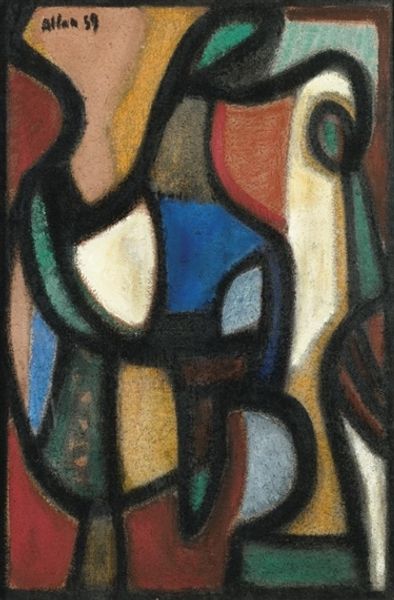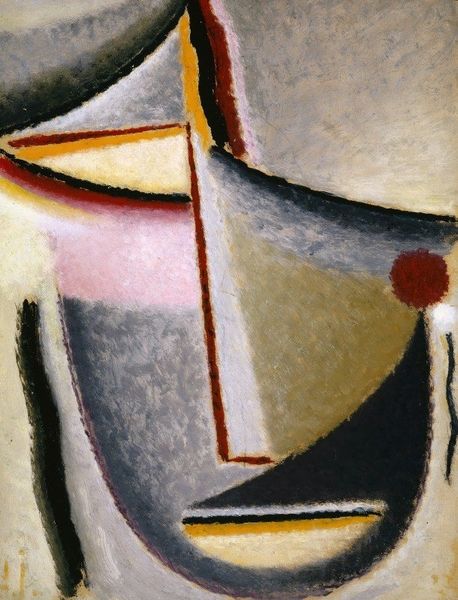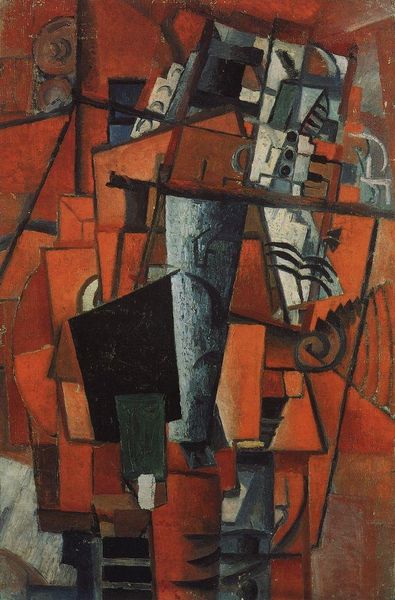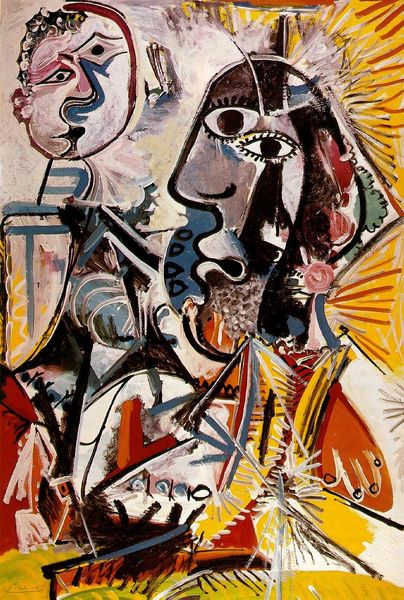
Copyright: Andre Masson,Fair Use
Editor: Here we have Andre Masson's "Minors," from 1945, created with mixed media, including acrylic paint. The striking reds and blacks create a frenetic energy. I’m curious—what do you see in this piece beyond the obvious subject matter? Curator: Well, it’s essential to consider when and where this work was created. 1945 marked the end of World War II. Masson, like many European artists, had sought refuge in the US. How might that experience of displacement and the backdrop of global conflict influence the frenzied depiction of these figures, these "minors"? Editor: So, you see the "frenzy" as possibly a response to the trauma of war and displacement. I hadn't considered the socio-political impact. Curator: Precisely. Consider the title itself – "Minors". Are we simply seeing laborers, or does it hint at a larger societal hierarchy, especially relevant given the political turmoil of the era? Also, note the near-absence of traditional perspective. What effect does that flattening have on your interpretation? Editor: It definitely adds to the feeling of claustrophobia and chaos. It's as if they're trapped, not just in a mine, but in a larger system. Curator: Exactly! Masson's engagement with automatism, a technique embraced by Surrealists like himself, invited the subconscious to play a pivotal role. The process was almost as crucial as the end product. Can we truly separate Masson's art from its context: his escape from occupied France, the thriving yet conflicted art scene in wartime America, and the search for a new artistic language? Editor: That's insightful. It gives the painting so much more weight, connecting it to history and artistic movements. Curator: Understanding that history gives us the tools to interpret the art and understand its lasting impact. Editor: I'll definitely look at abstract expressionism differently now. Thank you for opening my eyes to these new perspectives!
Comments
No comments
Be the first to comment and join the conversation on the ultimate creative platform.
